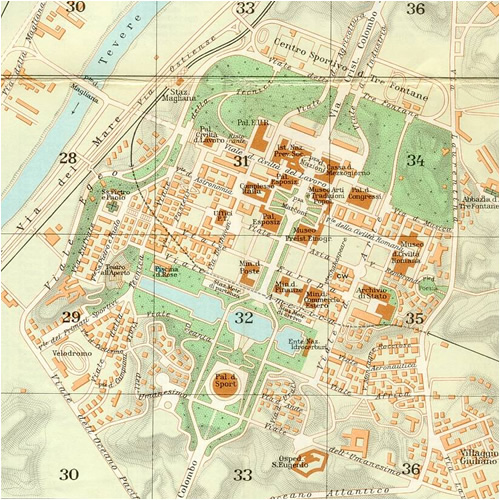| |



 |
|

In 1919, Benito Mussolini, a
former revolutionary socialist, founded a new movement called Fascismo.
Through a combination of shrews political manoeuvring and widespread
violence perpetrated by Mussolini black shirt squads, the Fascists gained
increasing support. In October 1922, after the Fascists had marched on Rome,
King Victor Emmanuel III named Mussolini prime minister. Within four years,
he had established himself as a dictator.
Ambitious
architectural building projects from the 1920s to the 1940s are still
visible around the capital city of Rome today, and would have been even more
widespread had the fascist regime lasted longer. Fascist architecture
appears here and there in the historical centre of Rome, but it is most
present south of the centre in the Mussolini-conceived E.U.R. district, and
at the Foro Italico sports complex north of the city. Many buildings were
inspired by imperial Roman art and architecture, but modified to be colder,
more sterile, and more totalitarian.
E.U.R. stands
for Esposizione Unversale Roma. This large complex was built since
1935 by Mussolini as symbol of fascism for the world; he wanted to expand
the new Rome in the west part, to connect it to the sea. The E.U.R. was
originally conceived for the 1942 world exhibition, which would never take
place since Italy entered the war in 1940.
The E.U.R.
provides a good image of how urban Italy would have looked if the fascist
regime would not have fallen; large, symmetrical streets and cold,
Roman-inspired buildings. The most representative building of this style is
the Palazzo delle Civiltą, which was supposed to look like the
Colosseum. During the 1950s and 1960s, old buildings were completed, and
other new buildings were constructed in the same style - housing offices,
ministries, large gardens and great parks.
 |
|
|
 |
![]()